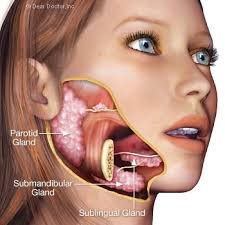Sialendoscopy is minimal invasive procedure in obstructive salivary gland diseases. Sialoendoscopy is the procedure in which endoscope is passed through the ductal system of salivary gland i.e. parotid or submandibular gland to visualize their lumen & pathologies like stone, stricture or stenoses. It is complementary to diagnostic techniques such as plain radiography, ultrasonography, computed tomography (CT), magnetic resonance sialography, and conventional sialography, all of which are traditional, time-tested methods for evaluating the salivary ductal system. It can be diagnostic or therapeutic depending on type obstruction. Diagnostic include suspicion of obstructive pathology. Therapeutic include removal stones, dialatation of stricture. In case of adults the procedure can be performed under local anaesthesia, but in children it may require general anaesthesia. The only contraindication for sialendoscopy is acute sialadenitis. Although this condition is not an absolute contraindication, it makes sialendoscopy problematic because an inflamed ductal system is more difficult to dilate. In addition, use of the rigid dilator system, a semirigid endoscope, or both during an acute episode of sialadenitis increases the chance of ductal trauma and potentially fosters the spread of infection in the soft tissues of the head and neck.
When salivary flow of gland slows down then it gets reposited to form stone which will cause swelling and pain in gland.
It can happen any major salivary gland. These include parotid and submandibular gland.
Symtoms should be evaluated by Ear, Nose and Throat surgeon. For confirmation of stone ultrasonography or CT scan is to be done.
No there will not be any external scar, it is performed with sialendoscope.
No risk of nerve damage, no risk of bleeding, normal anatomy of salivary gland and duct will be preserved, no external scar.
There is minimal pain for which analgesics are given. You will able to consume liquid diet for the first day. You will be instructed and given medications to increase the salivary flow.


